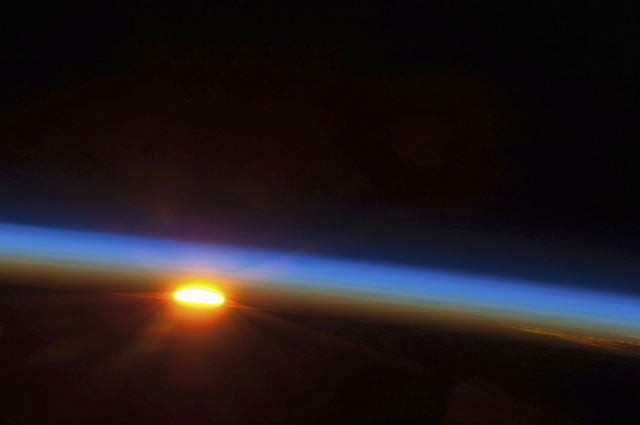Was Einstein wrong about the speed of light?
According to Magueijo and Afshordi’s theory, the speed of light was much higher at first

PHOTO: Reuters
Physicists have proposed a new experiment to test their theory challenging Einstein’s century-old claim that the speed of light remains constant. According to them, the universe may have glowed with light beams moving much faster than they do today.
Professor João Magueijo from Imperial College London and Dr Niayesh Afshordi of the Perimeter Institute in Canada proposed in the 1990s that there could have been a time right after the Big Bang when the speed of light was much faster than it is today.
The Sun is disappearing and you only have 10 months to prepare
If they’re right, the theory will shake the foundation of modern physics. According to Einstein, the speed of light is, was and always will be the same, therefore the laws of physics are the same everywhere.
The physicists, on the other hand propose the variation in light speed to explain a quirk of the early universe – its lumpy density. The universe as we see it today appears to have a relatively homogenous density. But if the speed of light has always been constant, then there hasn’t been enough time for light to reach the edge of the universe and “even out” the energy.
According to Magueijo and Afshordi’s theory, the speed of light was much higher at first, which connected the distant edges of the universe and then that speed dropped in a predictable way as the density of the universe changed. The physicists believe they have now come up with a way to help prove their version of events using our ever-increasingly accurate readings of cosmic background radiation, essentially a map of the oldest light in the universe; a“spectral index”.
They believe that if the exact figure of that index is precisely 0.96478, it will prove their model of how the universe expanded. “The theory, which we first proposed in the late-1990s, has now reached a maturity point — it has produced a testable prediction. If observations in the near future do find this number to be accurate, it could lead to a modification of Einstein’s theory of gravity," Professor Magueijo said.
“The idea that the speed of light could be variable was radical when first proposed, but with a numerical prediction, it becomes something physicists can actually test. If true, it would mean that the laws of nature were not always the same as they are today,” he said.
Courtesy NASA: Our star signs have changed!
If the “spectral index” comes back at this exact figure, this would be strong evidence in the right direction, however there will be more work to do to definitively prove the new theory. To irrevocably alter the foundation of modern physics, the scientists will need to have more than one piece of evidence in their favour.
This article originally appeared on Forbes.


















COMMENTS
Comments are moderated and generally will be posted if they are on-topic and not abusive.
For more information, please see our Comments FAQ